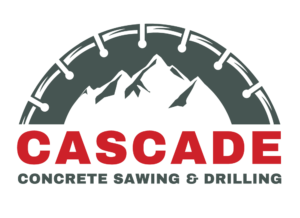Shrinkage sounds simple — when concrete reduces in size, just like your brand-new cotton jeans fresh out of a hot dryer. But although it may sound straightforward, it turns out to be a bit more complex.
As a simple explanation, excess water in the concrete mix evaporates and leads it to shrink or contract due to water loss. But at a higher level, shrinkage has to do with chemical reactions from the different properties of concrete mixes. And because the types of concrete mixes are plentiful and the climate where it’s used all impact shrinkage, it’s a scientific wonder to create the perfect mix.
Continue reading for more details on the specific types of shrinkage and how it can be managed to keep your concrete aesthetically pleasing and surface crack-free for years.
What is concrete?
Let’s glance at what concrete is before diving into the shrinkage types. While dozens of different concrete mix designs create differences in purpose, strength, and durability, these four core ingredients remain at different ratios: water, cement, coarse aggregates (like gravel) and fine aggregates (like fly ash).
- Water – creates workability and hydration for the concrete mixture.
- Cement – most commonly Portland cement, cement is the glue that holds the concrete together.
- Aggregates – fill air pockets, bulk up the concrete mixture and strengthen the structure.
Optional admixtures may be used to further increase durability and decrease the permeability of the concrete structures, helping to increase the beauty and lifespan of hardened concrete.
What causes the shrinkage of concrete?
Simply put, since the concrete mix contains water, shrinkage occurs from the loss of moisture as water further absorbs into the concrete material or evaporates into the environment.
But of course, since concrete is an engineering masterpiece, there’s more to it. Let’s take a look at the four different types of concrete shrinkage.
- Drying shrinkage of concrete – This is when the volume change is mainly due to evaporation after the drying process due to the environment. The concrete contracts from the loss of capillary water from the surface and cement paste.
- Plastic shrinkage cracking – This happens when the volume change is mainly due to the volume reduction of fresh concrete before it hardens or, in other words, shrinkage from water loss.
Either the aggregate mix continues to absorb water during the drying process, or the environmental conditions lead to loss of water through evaporation. It creates tensile stress on the surface area, leading to cracks on the concrete surface.
- Autogenous shrinkage – More typical of high-strength concrete, this is when the cement paste undergoes tensile stress due to restraints of the aggregates or from low moisture content in the concrete mix. It uniformly reduces the internal moisture due to cement hydration, or lack of.
This type of shrinkage can cause microcracking or macrocracking in the concrete, lessening the strength and quality of the concrete through deformation.
- Carbonation shrinkage – Also known as chemical shrinkage, this type of shrinkage reduces the volume of the concrete based on a chemical reaction. As concrete dries over time, the surface becomes porous as water evaporates. If the concrete mixture contains more water, it’s likely to develop larger surface pores.
As carbon dioxide from the air penetrates the pores, it reacts with calcium hydroxide in the hardened concrete mixture, forming calcium carbonates. This chemical reaction with the air can cause small shrinkage and lead to surface cracking.
What does drying shrinkage do to concrete?
You may have noticed a common theme from each type of shrinkage above — cracking. When shrinkage occurs in concrete, it is more likely to crack or deform. This leads to unwelcomed and unpleasant visual consequences and can also affect the strength and durability of concrete surfaces and structures.
Although shrinkage and cracking are natural parts of the concrete curing process and lifecycle, there are steps you can take to minimize shrinkage and ensure your concrete project is structurally sound and beautiful.
How to avoid problems due to shrinkage of concrete
Using great concrete technology, planning and a qualified concrete engineer can help you avoid problems, like cracking, that result from concrete shrinkage. Here are just a few of the considerations to make to manage shrinkage in your concrete mix:
- Weather – Consider the relative humidity of the environment where the concrete will be used. A more humid environment can withstand less water in the mix, whereas a dry environment will lead to more evaporation and potential shrinkage.
- Water content – Using the right water-cement ratio can help minimize shrinkage. Typically lower water ratios help to avoid shrinkage (ie: less evaporation). However, less water can also lead to stiffer, harder-to-handle concrete mixtures. Using the perfect ratio for your application and climate is essential.
- Cement content – Using the right components and admixtures for reinforcement, all at the perfect ratio for your project, is necessary to help avoid shrinkage.
- Reinforced concrete – Ideal for large building projects, concrete reinforced with steel can help make for a strong, durable structural material.
- Control joints – When added to large surfaces like pavements, control joints are planned cuts that help to avoid cracks at the surface caused by shrinkage.
Take the guesswork out of your next concrete project
An expert concrete engineer can help you get the most longevity, without unwanted and unsightly cracking. With so many considerations to make for the perfect concrete pour, we think the investment in hiring a professional to get the job done right is well worth it.
Need help sawing or drilling an existing concrete project?
Whether you’re looking to fix cracked or raised concrete or are diving into a home or building improvement project, our friendly team of experts is Washington State’s go-to for precision concrete sawing and drilling since 1980. Big or small, commercial and residential, we’ve got you covered. Fill out our contact form or give us a call at 206.385.1589 today!



